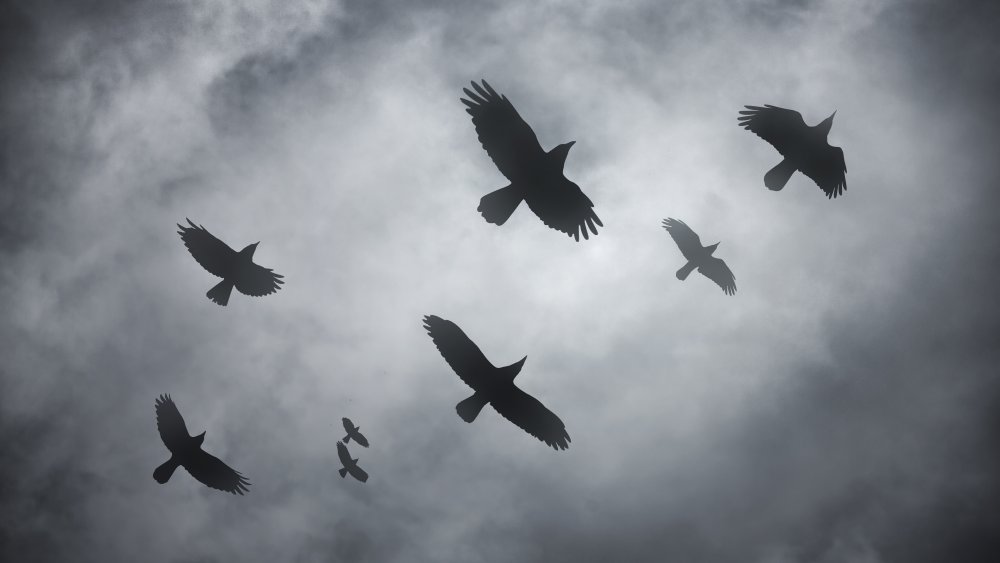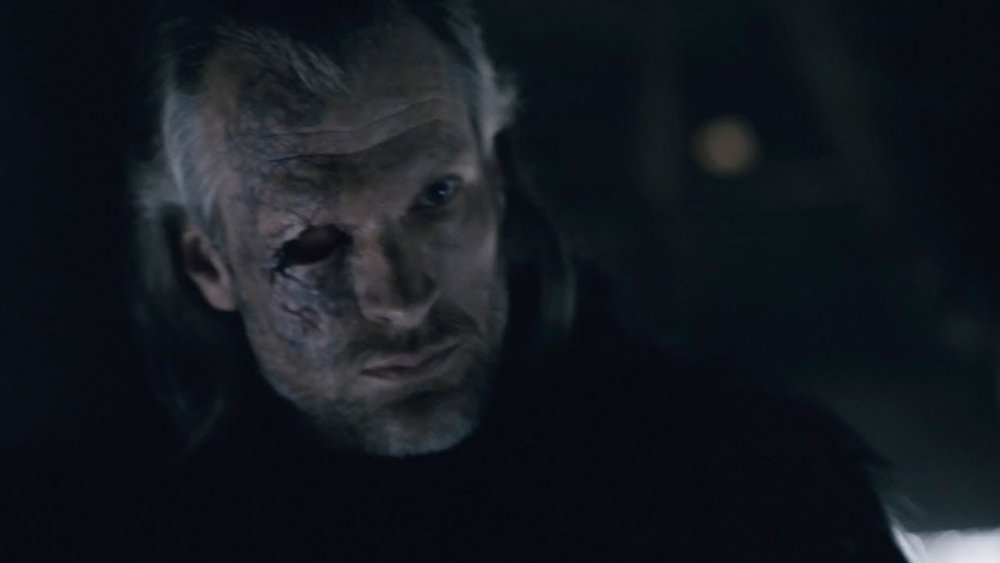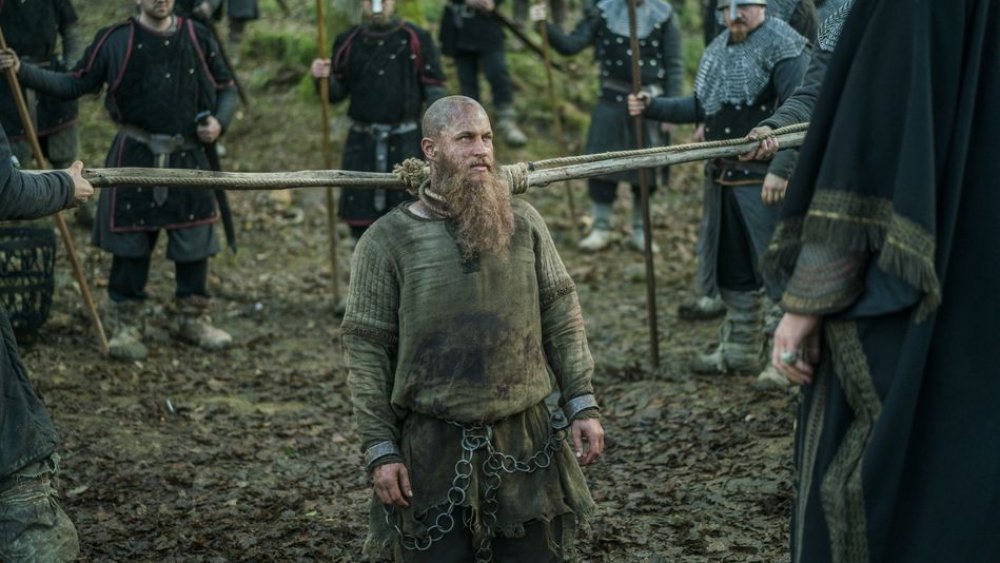The True Meaning Of Ravens On Vikings
As well as swords, robes, and mud, fantasy shows love animals. Dragons were so essential to Game of Thrones that they partially inspired a new prequel series entitled House of the Dragon. Horses with heroic names were just one of many different beings in Lord of the Rings (shout out Brego and Shadowfax). And the History Channel's drama series Vikings has ravens.
The fearsome Nordic warriors portrayed on the show have these super-smart birds on the brain. This is especially true of Viking king Ragnar Lothbrok, played by Travis Himmel. The patriarch of the series' war-mongering family has images of the birds tattooed onto the side of his head, brings banners bearing ravens into battle, and often wears clothes and armor emblazoned with the black birds.
This isn't just because ravens look cool (though they do), or because their screeching has an ominous effect that sends shivers up our spines. It's also not because they're a handy symbol that foreshadows drama (although, yes, they do that too). Vikings creator and writer Michael Hirst drew on Norse history and mythology to tell the story of the real-ish saga of Ragnar and his sons, and ravens had a special place in Viking culture, related specifically to the god Odin. But this isn't the Marvel version of Thor's dad — this is the true meaning of ravens on Vikings.
The ravens on Vikings represent the Viking god Odin
Marvel fans know Odin as Thor's ornery but wise father, played by Sir Anthony Hopkins. But forget the entire Thor MCU story (or at least save it for later). Odin's portrayal on Vikings, by Eddie Drew and Andre Eriksen, is slightly closer to the more brutal figure of Norse mythology. Odin was the king of a tribe of gods called the Aesir, who lived in Asgard, one of the Nine Realms Ancient Nordic people believed in. He frequently ditched his homeland to wander around Midgard, the realm of humans. As on the show, Odin would appear as a one-eyed old man, sometimes wearing a large hat and often dressed in grey robes.
As well as having two wolves and an eight-legged horse, Odin was frequently accompanied by two ravens named Huginn (from the Old Norse word for "thought") and Muninn (from the Old Norse word for "mind" or "memory"). It was believed that Odin would send the ravens out into the world every day to act as his eyes and ears. They would return every evening to update him on the news from other realms.
The ravens on Vikings often accompany Odin, but they also appear without him to signal that Odin is aware of the events that are happening in Midgard. His ravens are always keeping a watchful eye. On the History Channel show and in the Norse myths, ravens can also be a manifestation of Odin himself. A raven showing up at a sacrifice was thought to be a sign that the god had accepted the gift.
Ragnar Lothbrok's raven obsession comes from his connection to Odin
On Vikings, Ragnar Lothbrok claims to be descended from Odin. As mentioned before, the character displays raven symbols on his skin, clothes, armor, and banners, and has no problem sacrificing humans to satisfy the god's blood lust. This might seem at odds with Odin's image as the "Allfather," but actually, that moniker might be a mistranslation of something closer to "the one who sets everything in order." In Norse mythology, Odin was far from a benevolent father figure. He was the god of war and death (and also poetry), hence he was appealing to someone as power-hungry as Ragnar.
The reason Odin spent so much time around humans was because he was constantly searching for information that would help him defeat the giants at the future battle of Ragnarok. (He even traded one of his eyes for knowledge.) Also, he was on a recruiting mission. According to mythology, Odin and his ravens would collect the souls of the very best warriors who died in battle for his Ragnarok army — and we see this during the very first scene of Vikings. These souls traveled to the great hall of Valhalla, where they spent every day for eternity re-killing each other as training and every evening feasting.
The only way to get to Valhalla was to die in battle, so when a raven saves Ragnar from hanging himself, it's really Odin making sure he'll be able to get his hands on a skilled warrior one day. (And maybe showing benevolence to a loyal follower.) When Ragnar does die, he firmly believes he's headed for the great hall — and Odin's appearance to his sons seems to confirm that he's got a spot in Valhalla.


